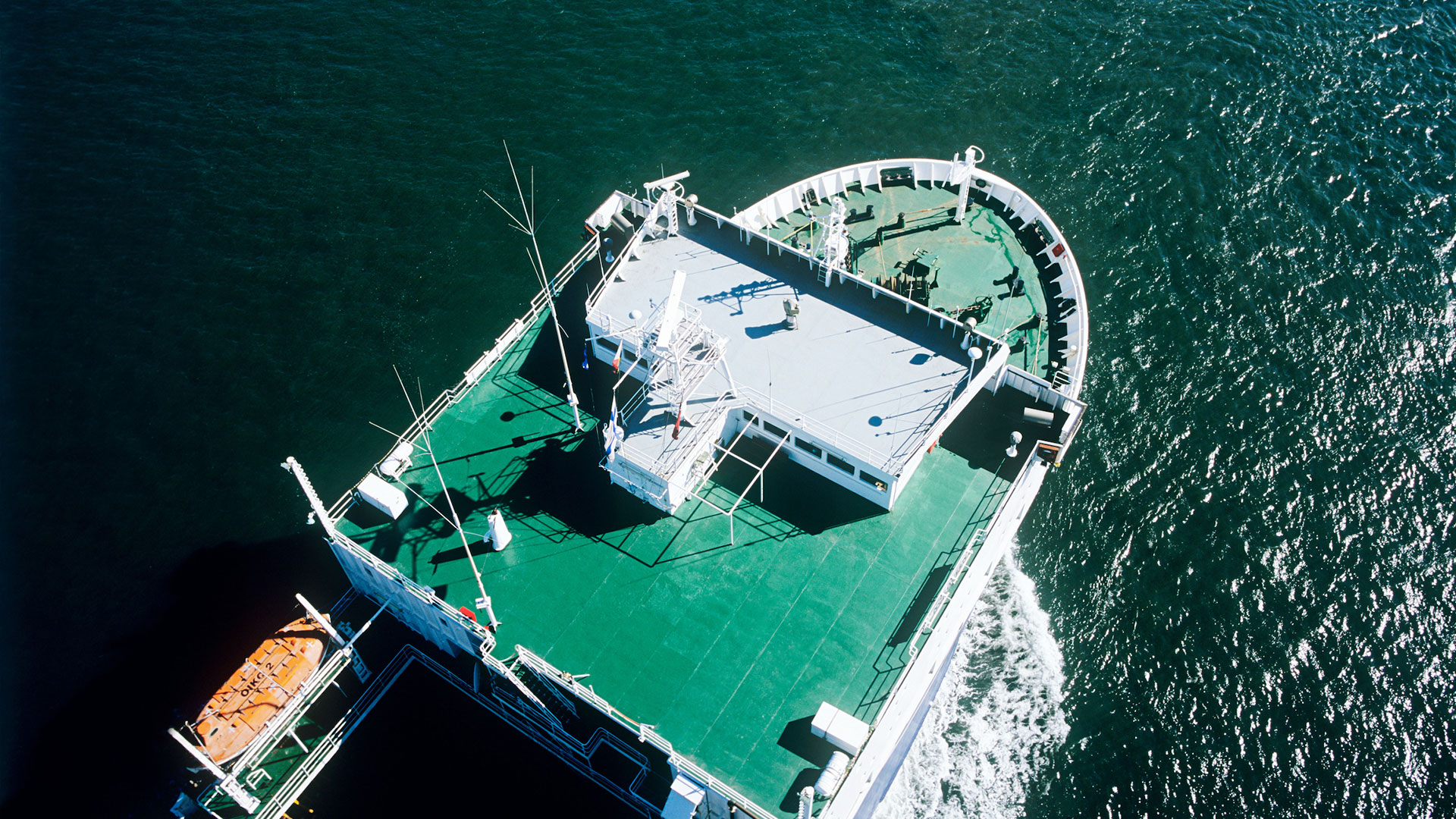Introduction
The tide is certainly turning. Although the Equator Principles have been applicable to certain asset finance transactions for some time now, the increased focus on sustainability measures within banks and financial institutions, the establishment of the Poseidon Principles, as well as the introduction of the LMA Green Loan Principles and the Sustainability Linked Loan Principles, are all leading to a change in focus. Banks and financial institutions are increasingly required to justify their investment choices based on sustainability and environmental risk, and public opinion is demanding ever more urgent action on environmental sustainability.
Regulatory impetus
These frameworks have gained attention at a time when shipping/offshore companies are facing regulatory change that will force the adoption of more environmentally friendly practices.
From January 1, 2020, all ships will be required by the International Maritime Organization (IMO) to comply with a 0.5 percent cap on sulphur content in shipping fuel (unless travelling within a designated emission control area, where the limit is 0.1 percent), with the aim of reducing the shipping industry’s reliance on high sulphur fuel oil (HSFO) (which currently has a sulphur content of up to 3.5 percent).
Given the fast-approaching deadline, with “business as usual” no longer an option for fuel source, what are the alternatives for vessels?
One option is simply to switch to a low sulphur fuel, but this is currently more expensive and in limited supply compared to HSFO.
Some shipowners are installing an exhaust gas cleaning system (or “scrubber”), which will allow the vessel to continue using HSFO as the resulting exhaust gases are “cleaned” of sulphur such that they comply with the IMO cap. Financing capital expenditure of this nature may be attractive to financial institutions looking to extend green loans and to improve their carbon rating under the Poseidon Principles. We have previously commented on the challenges of obtaining finance for fitting scrubbers (see our Legalseas December 2018 edition) and it remains to be seen whether shipowners will be able to access capital from an independent source. Shipowners may wish to consider adding a tranche of green debt to their existing ship finance loans which could meet the criteria required by the Green Loan Principles.
Alternative fuel sources
Other shipowners are embracing alternative fuel sources to reduce reliance on HSFO.
Norton Rose Fulbright recently advised on Teekay Offshore’s export credit agency backed financing of four new build “eShuttle” tankers which include VOC recovery systems. These are designed to convert volatile compound emissions produced from evaporation occurring in the cargo tanks into liquid gas, then use that gas as a secondary fuel alongside the primary fuel, liquefied natural gas. This should not only reduce bunkering requirements, but also significantly reduce harmful gas emissions. Compared to traditional shuttle tanker propulsion, annual reductions are forecast of 22 percent in overall fuel consumption, 42 percent in carbon dioxide emissions, more than 80 percent of nitrogen oxide emissions and more than 95 percent of sulphur dioxide emissions.
Some shipowners are looking to use battery power alongside traditional fuels. In these cases, vessels use battery power as well as conventional fuels during periods of high energy consumption. The battery then recharges during lower energy use periods, which is known as “peak shaving”. This type of hybrid power may be suited to tugs, for example, which need to produce significant power output but only for short periods of time. Wartsila has reportedly utilized this technology to install a three energy storage system that combines a diesel-electric configuration with batteries on an offshore construction vessel.
Much in the same way as we have seen electric cars grow in popularity contemporaneously with the development of the electric car charging network, this could also be the future for shipping. A wave conservation energy system has been developed in the form of a buoy. Each buoy generates energy using the movement of the waves and stores that energy ready for use. A number of oil companies are trialling these buoys to assess whether the stored power can be used for charging of autonomous underwater vehicles (AUVs). Further developments could lead to a floating renewable battery charging system for vessels, with the added advantage of being able to position a network of buoys conveniently as required at sea.
Building such a network would require substantial capital investment and a significant co-ordinated buy-in from the shipowner community, but perhaps this is exactly the type of sea change that the green and sustainability frameworks are aiming to achieve.
Green/Sustainable Bonds
One of the drivers for banks and financial institutions to extend green/sustainable loans is the potential ability to access a new type of investor base through the capital markets. Green or sustainable bonds can be issued, which differ from conventional bonds in that the issuer provides a set of green or sustainable criteria, and undertakes to use the capital raised for projects that meet that criteria. As a result banks and financial institutions may have capital earmarked solely for green or sustainable projects. Deploying that capital can require third-party opinions to confirm that the expenditure meets the criteria. It is worth noting that the EU is currently developing legislation on these criteria. If a project does not achieve the desired outcome and therefore falls outside the criteria for the bond, an investor may argue that the issuer has misled them. As a result, the bank or financial institution will require any project it invests in that uses such funds to report regularly and will set stringent criteria to ensure it remains compliant with the terms of any green/sustainable bond.
Read our Green bonds briefing
Sustainability-linked margin ratchets
A developing trend, which we expect to continue as sustainability and the environmental impact of the shipping and offshore industries receives ever greater focus, is the economic incentivization of improved sustainability performance. SBM Offshore, a leading provider of floating production storage and offloading units, recently announced it had refinanced its revolving credit facility with a new facility including a margin ratchet that links the company’s sustainability performance to the interest margin applicable to the facility. This ratchet provides for the applicable margin to increase or decrease by up to 0.05 percent per annum depending on the company’s environmental, social and governance performance as measured by an independent third party, Sustainalytics. We are aware of other companies exploring similar margin ratchets with their relationship banks.
Conclusion
With regulatory changes and increased public focus on environmental matters driving change in the shipping and offshore industries and certain capital providers available and willing to finance that change, there is scope for the right projects to receive financing at the right price. If this mixture of regulatory impetus and technological and financial ingenuity leads to a greener and more sustainable shipping and offshore industry, we will all benefit.
Additional information
Please continue reading for summaries of Equator, Poseidon, LMA Green Loan and Sustainability-Linked Loan Principles.
Equator Principles
AIM: Create a risk management framework for financial institutions to identify, assess and manage environmental and social risks when financing projects.
Banks and financial institutions that have voluntarily signed up to the Equator Principles apply these principles in their risk assessment and continued monitoring of projects, requiring regular reporting and external assessments, and in some cases improvement of certain factors prior to advancing funds.
Read our briefing on the proposed 4th version of the Equator Principles, on which Norton Rose Fulbright advised.
Poseidon Principles
AIM: Create a framework for financial institutions to monitor their shipping portfolios’ ‘carbon intensity’ against standard decarbonisation trajectory targets, and to report on these annually.
Consists of four elements:
- Assessment - the Secretariat of the Poseidon Principles will establish decarbonisation trajectories for each ship type and size class which will meet the IMO ambition of reducing total annual greenhouse gas emissions by at least 50 percent by 2050 (based on 2008 levels). Signatories will be required to assess the alignment of the actual ‘carbon intensity’ (which is assessed using Annual Efficiency Ratio (AER) which uses parameters of fuel consumption, distance travelled, and design deadweight tonnage) of financed vessels with the decarbonisation trajectories.
- Accountability - there is a commitment by signatories to obtain unbiased information to make their calculations by using information from classification societies and other organisations recognised by the IMO.
- Enforcement- the signatories agree to work with their clients to get the necessary information to comply with the PP. There are precedent covenants and definitions which signatories should use ‘best efforts’ to have included in new loan facilities.
- Transparency - there are three requirements:
- A signatory has to publically acknowledge that it has become a signatory
- A signatory has to provide an annual, overall climate alignment report on its shipping portfolio to the secretariat
- A signatory has to publish its annual, overall climate alignment report on its shipping portfolio in relevant institutional reports
LMA Green Loan Principles
AIM: Create a high-level framework for loans to be recognized as “green.”
Consists of four key components:
- Use of Proceeds – loan proceeds should be used for “green projects” these are defined by the LMA as a non-exhaustive list and include energy efficiency, pollution prevention and control, clean transportation and renewable energy.
- Process for Project Evaluation and Selection – borrowers are to communicate their environmental sustainability objectives, how their projects are eligible as green projects and how they will identify and manage any material environmental risks associated with the proposed projects.
- Management of Proceeds – keeping green loan proceeds separate from other funds within the borrower’s account to enable tracking of its use towards “green projects”.
- Reporting – regular updates from the borrower on use of funds, progress of green projects and their material impact.
Sustainability-Linked Loan Principles
AIM: Create a high-level framework for loans to be recognized as “sustainable.”
Consists of four key components:
- Relationship to Borrower’s Overall CSR Strategy – clear communication of, and link between, the borrower’s sustainability objectives, set out in its corporate and social responsibility strategy and predetermined sustainability performance objectives (SPTs).
- Target Setting – Measuring the Sustainability of the Borrower – the lenders and the borrower agree the SPTs and performance is measured against the SPTs.
- Reporting – regular updates from the borrower on the SPTs and reporting to the public is encouraged.
- Review – external review or internal review where the borrower has internal expertise.





